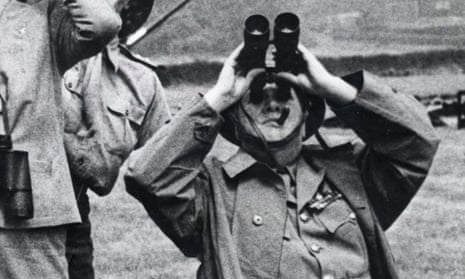Surprising stories about Winston Churchill just keep on coming. He has long been praised for his courage, wisdom, eloquence and many other qualities, but people have been amazed to learn this week that he was also a scientific visionary.
The revelation comes from the US National Churchill Museum in Missouri, where the astrophysicist Mario Livio uncovered Churchill’s “lost” 1939 essay about the possible existence of alien life, titled Are We Alone in the Universe? It demonstrates a remarkably high level of scientific literacy and far-sightedness, Livio points out. Yet this is only part of a much bigger story, too long neglected. Churchill had a long career as a topical science writer and he appreciated the importance of new breakthroughs to the development of civilisation better than any other leading western political leader of the past century.
Although Churchill had no great aptitude for science, from his days as a solider he believed he needed to have a basic appreciation and knowledge of the subject if he were to achieve his ambition of becoming prime minister. As a subaltern in India, he read Charles Darwin as well as the author who probably most shaped his appreciation of science and its role in military and civilian life: HG Wells. Soon after Churchill became an MP, he made it his business to have a quiet dinner with Wells, whose every book Churchill claimed to have read twice.
In 1914, Wells published his scientific romance The World Set Free, in which he introduced the term “atomic bombs”. Churchill first alluded to these weapons – each “no bigger than an orange” but “able to blast a township at a stroke” – in his 1925 essay Shall We All Commit Suicide? The essay is shot through with a Wellsian fear of dreadful new weapons, especially chemical ones, which threatened to change the entire nature of warfare, as battlefield conflicts between soldiers became less important than scientists working in the back rooms.
By the time Churchill published this essay, his relations with Wells had cooled, and he began to take scientific advice from Frederick Lindemann, a professor of physics at Oxford University. Though widely disliked as a prig, Lindemann was undoubtedly smart and had an enviable gift for setting out complicated scientific ideas in an accessible way. No less important for Churchill, Lindemann was as loyal as a lapdog and always eager to offer his advice, not only on science but every other subject under the sun.
Through Lindemann’s lucid briefings, Churchill built his reputation as a politician exceptionally well-versed in technical matters and able to knock out entertaining essays on science. The literacy that so impressed Livio in the article on alien life is most appropriately attributed to Lindemann, although Churchill will also have benefited from his reading of Olaf Stapledon’s science-fiction masterpiece, Last and First Men, which was published in 1930.
A year later, Churchill published his famous essay Fifty Years Hence, a 4,000-word meditation on the effects that science might have in the future. It looked ahead to a wide variety of new developments, including wireless telephones, the potential of robots, the artificial cultivation of animals in laboratories and, above all, the release of nuclear energy to power societies and build weapons of unprecedented destructiveness. Churchill wrote that scientists were looking for “the match to set the bonfire alight”. Eight weeks after the essay’s publication, a Cambridge experimenter discovered the match, the sub-atomic particle he called the neutron.
Even more widely read than Fifty Years Hence was Churchill’s foray into science journalism for the News of the World. In the 1930s, when he was in the political wilderness, he wrote several articles about possible future applications of new science. One of his themes, briefed by Lindemann, of course, was the possible impact of nuclear technology at a time when another war was looming. Most leading physicists at the time were extremely sceptical that this type of energy was likely to be important in the foreseeable future. But Churchill had other ideas. In late 1937, he explained to millions of readers that nuclear energy may soon be captured, with potentially frightening consequences. Less than 12 months later, nuclear fission was discovered by two scientists working in Berlin, capital of Hitler’s Germany. From a scientific point of view, he was supremely well-equipped to deal with the impending nuclear age.
But Churchill’s interest in science is not news to scholars. His writings – in almost every draft – have been publicly available among his papers which are stored the magnificent Archives Centre in Churchill College, Cambridge. A few years ago, his archive was made available online. His essay on aliens was not in fact lost, but hidden in plain sight.
From those papers, we can see that Churchill still has much to teach his successors. One Sunday in April 1926, when Churchill was chancellor of the exchequer and preparing his budget, he set aside his papers for the morning and dictated a summary of quantum theory. Can anyone seriously imagine any political leader today using their downtime to brush up on their understanding of string theory?
